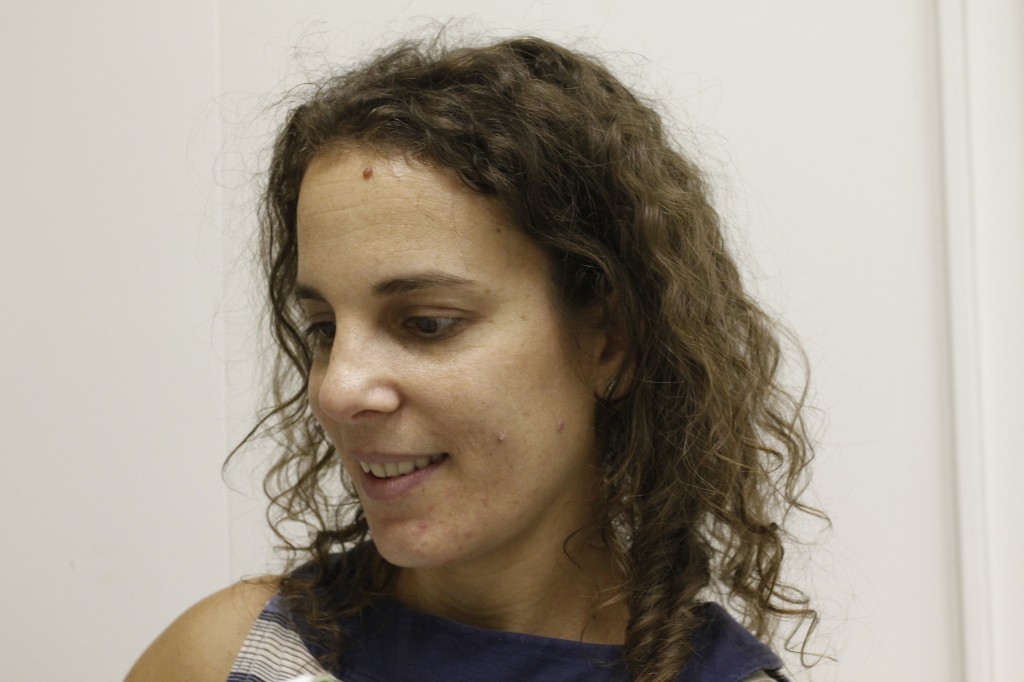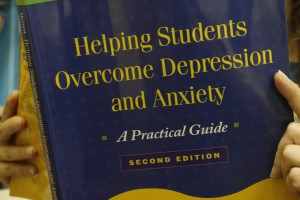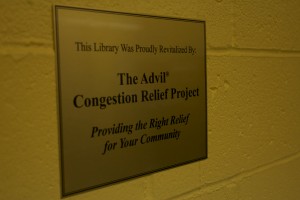One Monday in October, therapist Shlomit Levy was called to a classroom at I.S. 313, a middle school on Webster Avenue in the Bronx where she has worked for the last four years. A student was causing disruptions, storming out of class.
The clinician from a nearby mental health clinic, Astor at Highbridge, took the student aside for a two-hour therapy session. The student was able to return to class with the help of Levy, but not for long. Half an hour later, she had lost control again.
In her emergency session, Levy discovered the student’s family was not cooperating with her therapy. If Levy had been able to see the child earlier, the crisis might not have happened.
But last year, the state pulled its Clinic Plus funding that required I.S. 313 to have parents fill out mental health assessments for their children. Now that the program is gone, the clinician has no information about which children may need help.
The result is that Levy now in October has only one new student patient, at a time when she usually has at least 10. “I’m missing a lot of information,” she said.

Shlomit Levy, a clinician for Astor at Highbridge in I.S. 313, is seeing far fewer children ever since the clinic lost its state funding. (VALENITNE PASQUESOONE/The Bronx Ink)
Levy’s referral numbers from schools in no way reflects the area’s need. The only mental health outpatient clinic for children and teenagers in the Highbridge section of the Bronx, Astor at Highbridge serves more than 400 clients ages 2 to 21. Patients are seen in its Shakespeare Avenue clinic and inside six local public schools. Its future is uncertain in a community where 52 percent of the population has already received mental health treatment or counseling. In 2006, mental illness hospitalization rates were significantly higher in Highbridge and Morissania than in the rest of the Bronx and New York City.
Levy said the children she sees are suffering from trauma and anxiety among other issues. Some of them have lost a family member to gang violence, or have been sexually abused. Others have parents who are either arrested, incarcerated, or deported. Levy has had patients who lost all contact with their deported parent. Undocumented, these students can’t leave the country to go visit them.
“All these children have such challenging life environments,” Levy said. The therapist is convinced five clinicians like her are needed in I.S. 313. “And we would all be very busy.
The end of Clinic Plus not only curtailed services for needy children, but also created a greater financial problem for the clinic. It came at a time when Astor at Highbridge is being squeezed by yet another cut in state funding. Since 2010, New York State has gradually reduced its direct support for Astor’s two outpatient clinics in the Bronx by 25 percent per year. The same day Levy was called to P.S. 313, the clinic received word that a third 25 percent reduction would go into effect next year, totaling 75 percent lost revenue in three years. The cuts mean clinicians are under pressure to increase the number of clients who bring in Medicaid or private insurance money.
Astor at Highbridge opened the satellite clinics in schools in 2007. The clinic now has six clinicians who work in neighboring schools. Astor was keeping these services afloat after Clinic Plus money ended, yet times are difficult.
“A couple of my schools want more clinicians,” said Zory Wentt, program director at the Astor at Highbridge clinic. “Do we need it? Yes. Are we going to get it? No. We don’t have enough funding for that.”
Wentt has worked a Astor at Highbridge since it opened seven years ago. It remains the only mental health clinic in the area. It was difficult at first to convince residents to overcome their fears and seek therapy, she said. A strong stigma attached to mental health needs was a barrier.
“A lot of children need mental health services. Yet they have never received it,” Wentt said.

A book Levy and other clinicians use to help students in schools. (VALENTINE PASQUESOONE/The Bronx Ink)
At the clinic, therapists see children with conditions ranging from attention deficit-hyperactivity or oppositional defiant disorders to those with bipolar or suicidal symptoms. Violence in the area spills over into their clinic. Trauma and post-traumatic stress disorders are common illnesses.
“We had a little girl whose father was shot right in front of her,” Wentt said. “We have a lot of death cases, along with children being placed in foster care or suffering from sexual trauma.”
In a neighborhood where 35 percent of residents live below the poverty line, according to a study by Queens College, lack of resources can become a triggering factor when it comes to mental illness. The majority of the clinic’s patients are low-income, Hispanic and African-American residents. Eighty-five percent of them are on Medicaid and 5 percent have no insurance. Only 10 percent can afford a private health insurance. Revenue from these insurances is now Astor’s only chance to survive financially.
“Funding is a challenge, we’re constantly out there seeking private funding,” said Sonia Barnes-Moorhead, the executive vice president of the Children’s Foundation of Astor. Astor Services for Children and Families operates 12 sites in the Bronx, including two outpatient clinics. Clinicians have had to provide the same services in a way that could decrease costs.
Astor at Highbridge has been affected by what appears to be a national trend: increasing and larger cuts to mental health state funding.
According to the National Alliance on Mental Illness, more than $1.8 billion has been cut from mental health state budgets in the U.S. from 2009 to 2011. At the same time, one in 10 American children have serious mental health conditions like depression or stress disorder. New York is the second state where cuts are the largest, after California. It cut $204.9 billion in its mental health budget between 2009 and 2012.
Three years ago, the New York State announced it would reduce its Comprehensive Outpatient Program Services (COPS) funding by 25 percent each year, until no funding is left. The state increased Medicaid rates to keep outpatient clinics afloat, but centers like Astor at Highbridge face direct consequences. The COPS funding represented half of the clinic budget, about $1.5 million.
Services at the clinic have been reorganized, and the workload has become barely manageable for some therapists. In 2009, a clinician had about 20 cases in total. Now, their caseloads vary between 50 and 55 people.
“We’ve had to work harder, we’ve instituted a business-like model in mental health services,” Wentt said.
The mental health clinic started to launch open access sessions four days a week for three hours in order to build their client base.
Things can easily become hectic during open access time. Children cry when their parents meet with the therapist, leaving them in the waiting area. Crises can erupt when children fight. A parent advocate and front desk receptionists are available to care for them, but they can often feel overwhelmed.
“With open access, no one is allowed to have a free moment when people come in,” Wentt said.

Zory Wentt has worked at the Astor at Highbridge clinic since 2005. (VALENTINE PASQUESOONE/The Bronx Ink)
With Astor’s limited staff, new clients are often left waiting. On Oct. 1, Nilza Martinez, a 26-year-old resident of Highbridge took advantage of open access hours. She and her 6-year-old child waited for more than an hour, only to be given an appointment two weeks away. No Spanish-speaking clinician was available that Monday.
Her son’s pediatrician at the Bronx-Lebanon Hospital Center had referred her to the Astor clinic. Her son, she said, was showing extreme anxiety about sleeping, and being left alone.
Clinicians said their heavy caseloads prevent them from being entirely available during open access services. Every week, they need to have an average of 25 billable hours of direct contact with their clients to keep the clinic alive. Some of them say they have to schedule appointments almost every hour to maintain this requirement.
“There is a lot of pressure since we have a lot of paperwork and accountability on top of the work you do in sessions with the children and families you’re working with,” said Audrey Williamson, a 26-year-old social work intern working as a full clinician at the clinic since September. She works 21 hours a week at Astor at Highbridge, besides her classes at Columbia University School of Social Work. She is required to see her clients for at least 10 billable hours.
“Yet I think the pressure of helping and assisting children and their families is much bigger,” Williamson said. “You have lives in your hands for the most part.”















